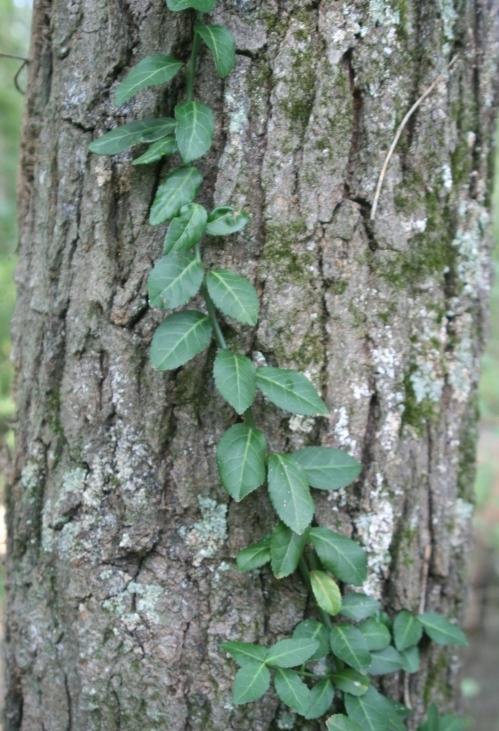About Winter Creeper (Euonymus fortunei)
Life cycle and background
Winter creeper euonymus (Euonymus fortunei), also called creeping euonymus, is a perennial plant that grows as a groundcover, climbing vine, or sprawling shrub. It was introduced from China in 1907 for use as an ornamental evergreen groundcover. In 1994, the Maryland Department of Natural Resources reported it as being invasive in natural areas of Maryland. The Maryland Department of Agriculture (MDA) named winter creeper a Tier 1 invasive plant, as of February 2018. This classification means that a person may not propagate, import, transfer, sell, purchase, transport, or introduce any living part of a Tier 1 invasive plant in the state of Maryland. Refer to the MDA website for additional details.
Invasive Plants to Avoid Buying for your Yard and Garden in Maryland
Growth habit
Winter creeper euonymus is highly variable in its growth habit and appearance. Leaves are evergreen, about 1 inch or less in length, crenate-serrate along the margin, and arranged oppositely along the stem. Leaf color is variable, usually dark green with silver-toned veins. Climbing stems form aerial roots, similar to English ivy
Winter creeper can be 4-12 inches tall as a groundcover or as high as 70’ as a climbing vine. These plants can also grow in the form of mounding, woody shrubs. The groundcover form restricts the growth of native terrestrial plants and the vining form can climb and kill small trees.


Reproduction
Adult plants produce a ⅓” diameter pinkish capsules that open to expose orange seeds in October-November. Birds and other animals aid in seed dispersal. Winter creeper also spreads vegetatively from the roots.

Conditions that favor growth
Tolerates heavy shade to full sun and variable soil conditions.
What to plant instead
Bearberry (Arctostaphylos uva-ursi)
Controlling winter creeper euonymus
- (PDF) Weeds Gone Wild: Winter Creeper
- (PDF) Control of Invasive Non-Native Plants
- Plant Invaders of Mid-Atlantic Natural Areas
Additional resources
Burrell, C. Colston. 2007. Native Alternatives to Invasive Plants. Brooklyn Botanic Garden.Kaufman, Sylvan Ramsey & Wallace Kaufman. 2007. Invasive Plants: Guide to Identification and the Impacts and Control of Common North American Species.
Maryland Biodiversity Project, Winter Creeper.
Swearingen J., K. Reshetiloff, B. Slattery, and S. Zwicker. 2002. Plant Invaders of Mid-Atlantic Natural Areas. National Park Service and U.S. Fish & Wildlife Service, Washington, DC.
Compiled by Christa Carignan, reviewed by Debra Ricigliano, University of Maryland Extension, 9/2018.
Still have a question? Contact us at Ask Extension.
